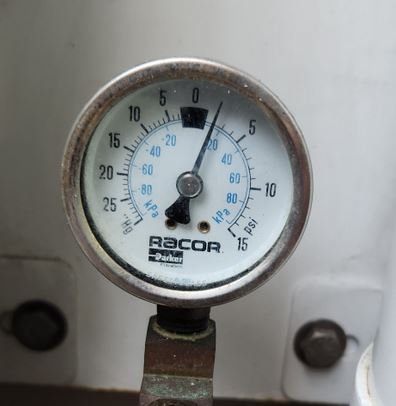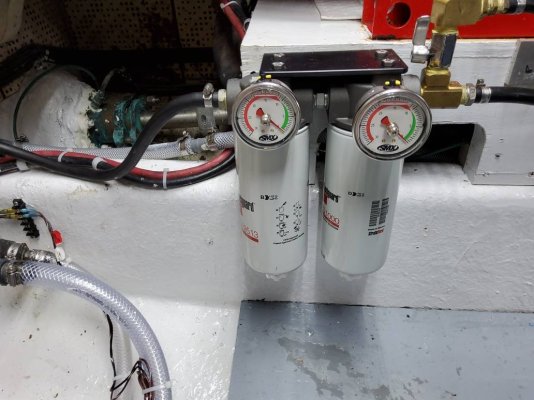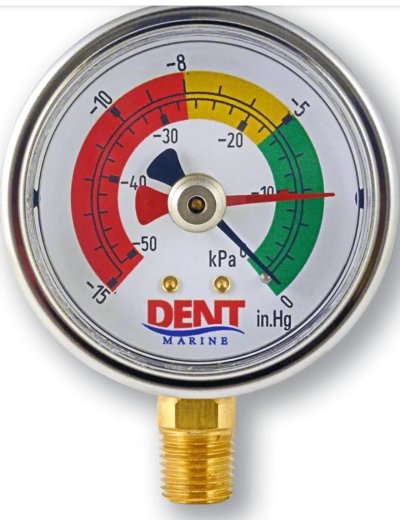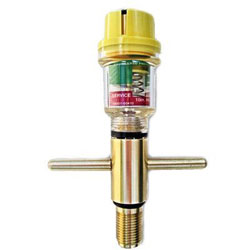ranger58sb
Guru
Can ya'll help me learn how to interpret our Racor vacuum gauges? We've not had one before, and I haven't found instructions on the Parker-Hannefin website...
The gauge (RK19667) presents:
- 0-30 "Hg to the left (outside, black typeface)
- 0-100 kPa to the left (inside, blue typeface)
- 1-15 psi to the right (outside, black typeface)
- 0-100 kPa to the right (inside, blue typface)
And there's a black area at 12 o'clock which encompasses approx 0-3 "Hg/0-10 kPa) to the left and approx 0-2 psi/0-10 kPa to the right.
The needle on one of our 751000MAX pairs in the black area, just a hair left of zero. The other is outside the black to the right and reading approx 3 psi/15 kPa.
I think I know that "Hg (presumably inches of Mercury) is inches of vacuum. (Yes?)
And that inches of vacuum is what tells me when to change the filters. (Yes?)
Neither of our needles are swinging to the left (11 o'clock direction) of center (zero). So does that mean neither gauge is telling me to immediately change the filter?
Or...?
Is a positive kPa/psi reading -- outside the black area -- good? Or bad?
I can't tell what's supposed to happen when I change the selector on one pair from one filter to the other. I did make that change yesterday, to see what happens, but near as I can tell, squat happened. IOW, no change in needle position on that pair. The gauges don't appear to have any user-selectable "reset" capability. And these gauges don't have a "follower and change indicator"...
Help?
-Chris
The gauge (RK19667) presents:
- 0-30 "Hg to the left (outside, black typeface)
- 0-100 kPa to the left (inside, blue typeface)
- 1-15 psi to the right (outside, black typeface)
- 0-100 kPa to the right (inside, blue typface)
And there's a black area at 12 o'clock which encompasses approx 0-3 "Hg/0-10 kPa) to the left and approx 0-2 psi/0-10 kPa to the right.
The needle on one of our 751000MAX pairs in the black area, just a hair left of zero. The other is outside the black to the right and reading approx 3 psi/15 kPa.
I think I know that "Hg (presumably inches of Mercury) is inches of vacuum. (Yes?)
And that inches of vacuum is what tells me when to change the filters. (Yes?)
Neither of our needles are swinging to the left (11 o'clock direction) of center (zero). So does that mean neither gauge is telling me to immediately change the filter?
Or...?
Is a positive kPa/psi reading -- outside the black area -- good? Or bad?
I can't tell what's supposed to happen when I change the selector on one pair from one filter to the other. I did make that change yesterday, to see what happens, but near as I can tell, squat happened. IOW, no change in needle position on that pair. The gauges don't appear to have any user-selectable "reset" capability. And these gauges don't have a "follower and change indicator"...
Help?
-Chris
Attachments
Last edited:





